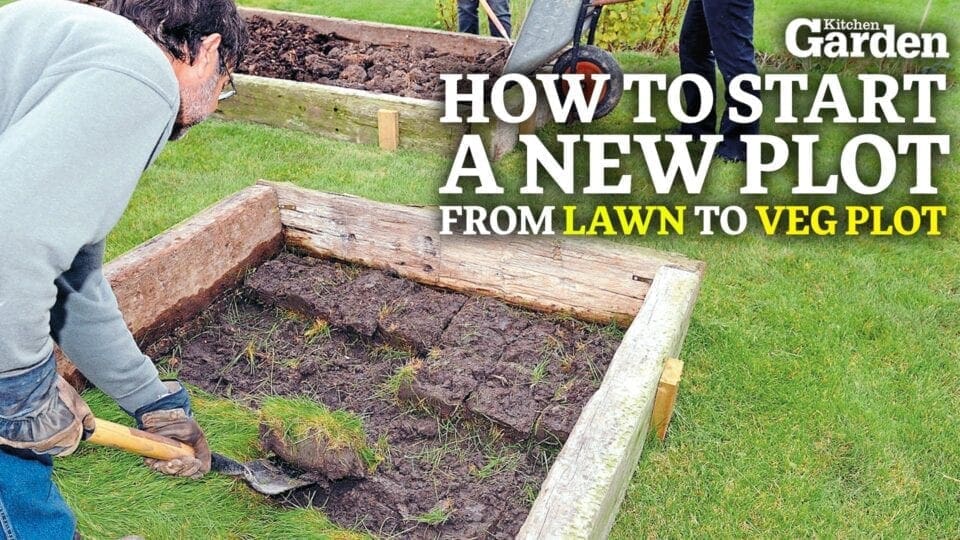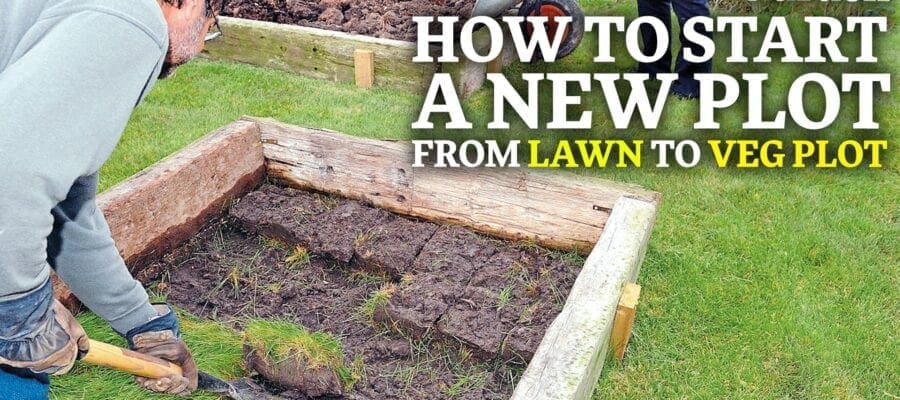
Starting to grow your own vegetables is an exciting project but can seem a bit overwhelming at first. The best way is to start small and keep adding more areas and crops as you build up confidence.
Plot from scatch
Ideally, you want your plot in a sunny spot. That said, there is a lot you can grow in part shade. The other issue is the state of the soil where you want to grow.
The best place will be a piece of lawn or an area previously used as flower borders. If it is in part of a garden that is full of rubble and waste or is an old patio area, then maybe raised beds might be a better option here unless you are prepared to put in a lot of extra prep work first.
If you’re creating a veg patch from a piece of lawn you have a few options. If the area is not too big, you can lift the turves of grass with a spade. It helps to mark out the area with strings then insert a spade into the turf by 5-8cm (2-3in) and then make two lines a spade’s width wide. After this, you cut short cross-sections along the length and then push the spade under to lift the turves. The grass should lift up in nice blocks.
The next step is to fork over the soil beneath to break up this hard pan. Once the soil is dug over you may be ready to plant if the soil is good. If the soil is really heavy and sticks to your fork badly, it could be very clayey.
If the soil is the opposite, it could be quite sandy. A nice loamy soil will be fairly easy to dig and break up nicely into a crumbly material and be quite dark.
Containers and raised beds
If digging up an area of your garden is not possible, you can grow lots of veg in containers or create some raised beds. Any container that holds compost or soil can be used as long as it has drainage holes in the bottom. Buckets with holes drilled in the bottom are good to start with as you don’t need anything fancy.
If you are planning on using a lot of large containers or building raised beds, it may be a good idea to buy in some topsoil (Rolawn do Vegetable & Fruit Topsoil), which you buy in bulk.
Soil will retain moisture and nutrients better than compost and if using in pots, these are more stable filled with soil. Plus you are not using peat-based composts and if it’s a long-term project, soil would be better.
Kitchen Garden Magazine Podcast
Want to find out more about starting your own plot? Give the latest episode of the Kitchen Garden Magazine podcast a listen where the team discuss the best ways to start a new plot, whether it be in your back garden or an allotment!
The podcast is jam-packed full of tips and tricks in everything from starting from scratch on a lawn, managing weeds, double digging, bucket gardens and much more.





